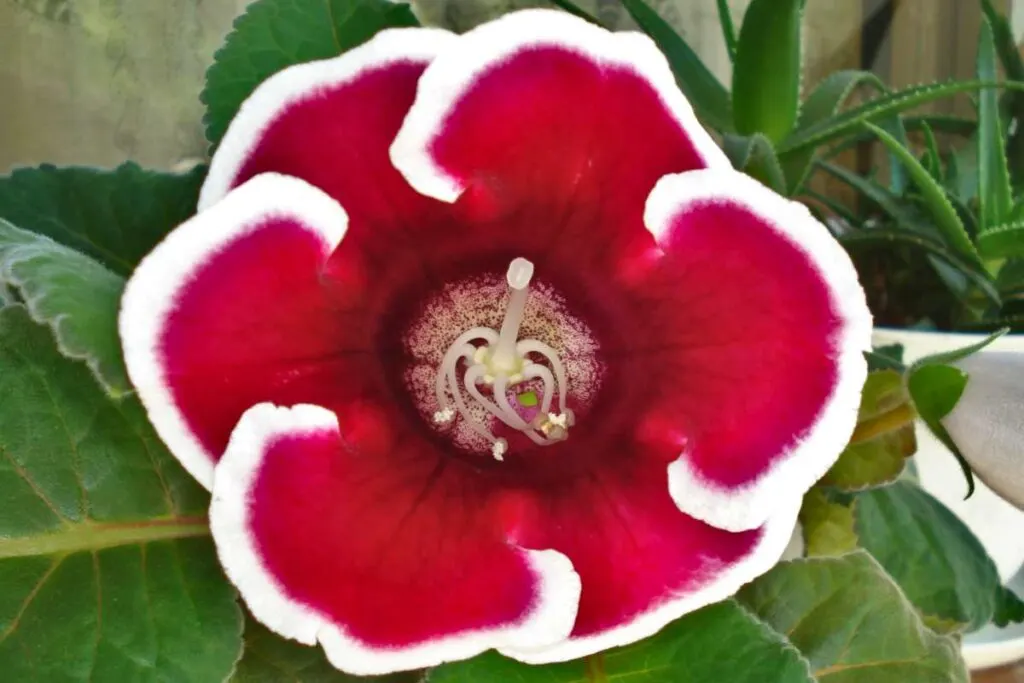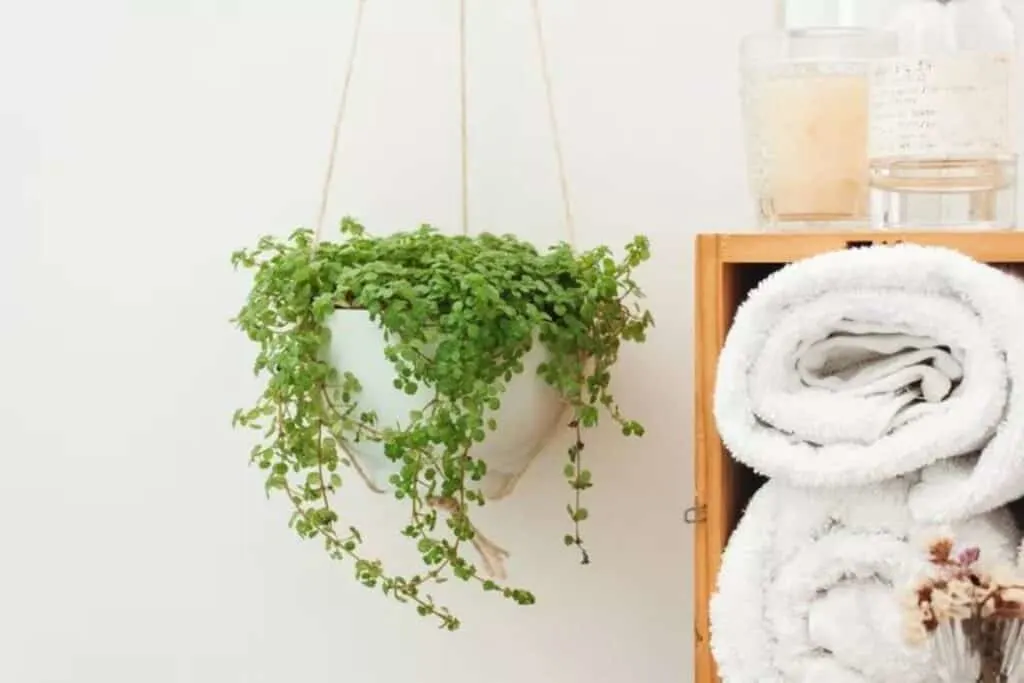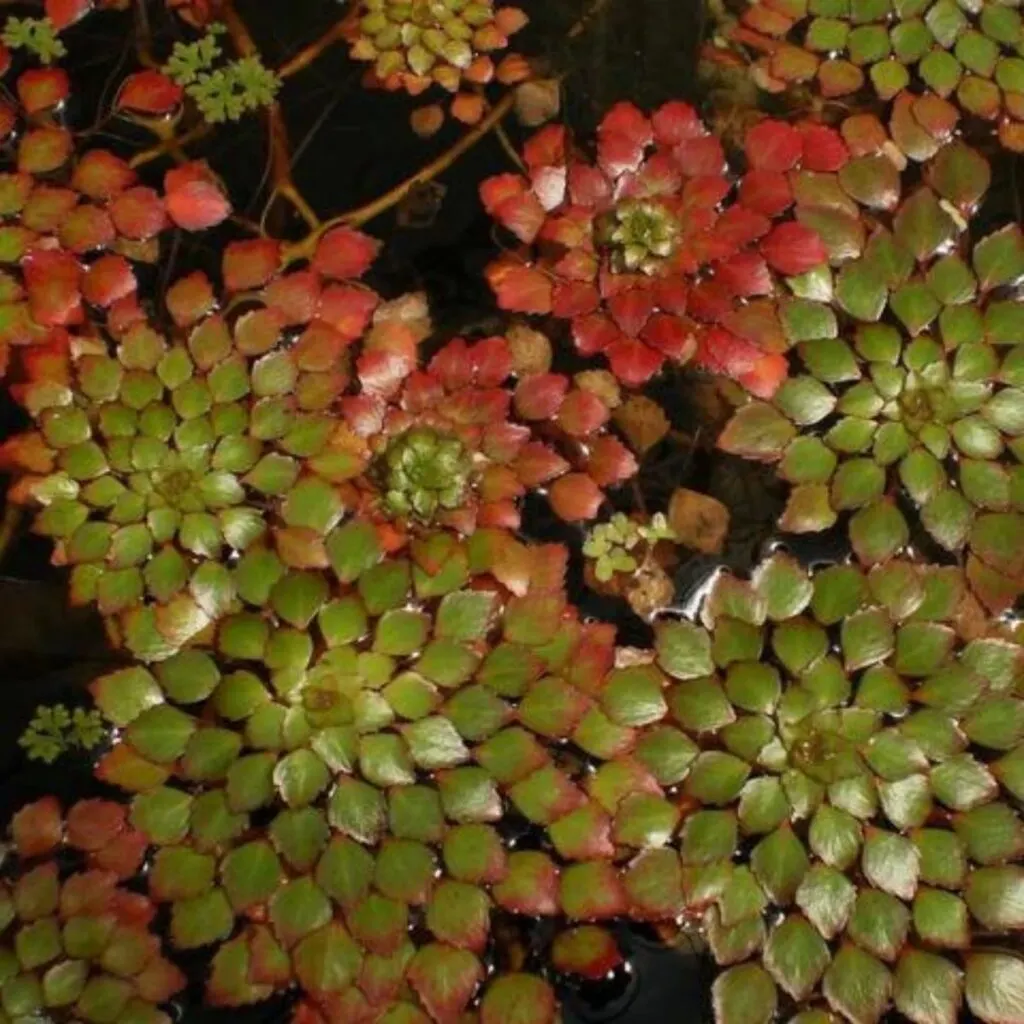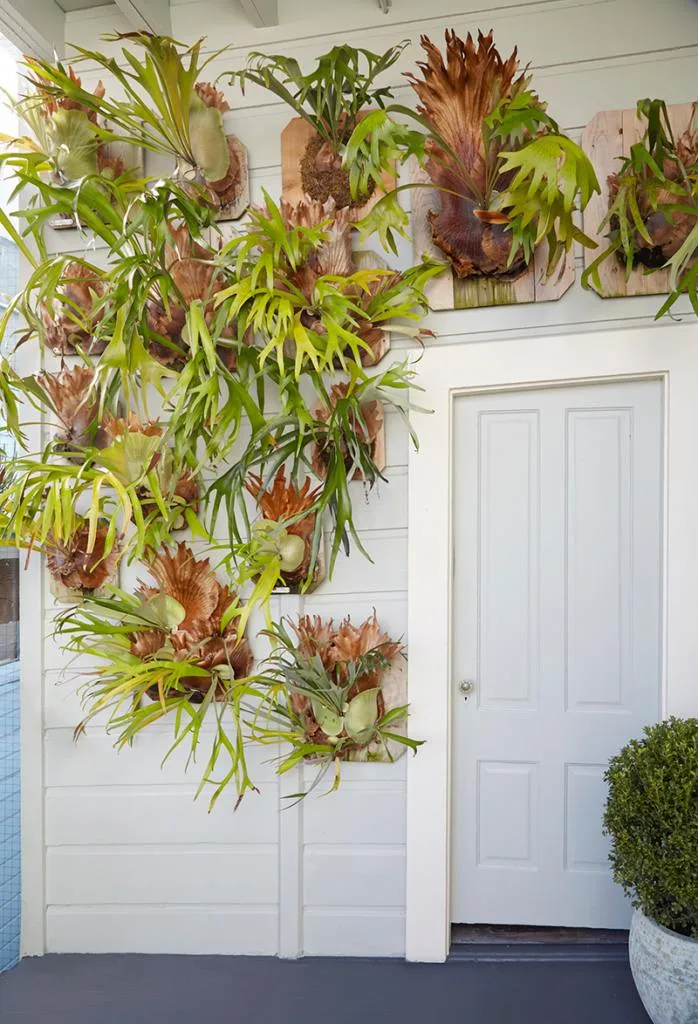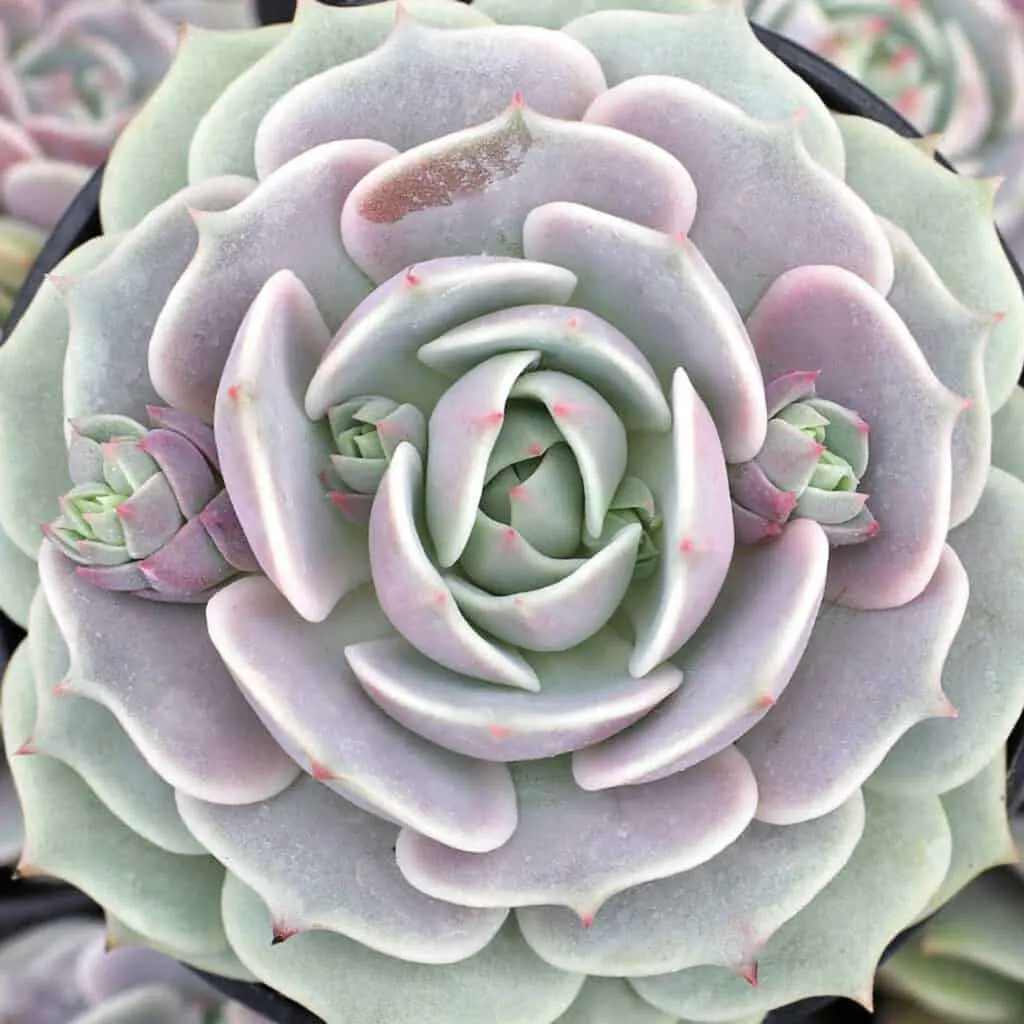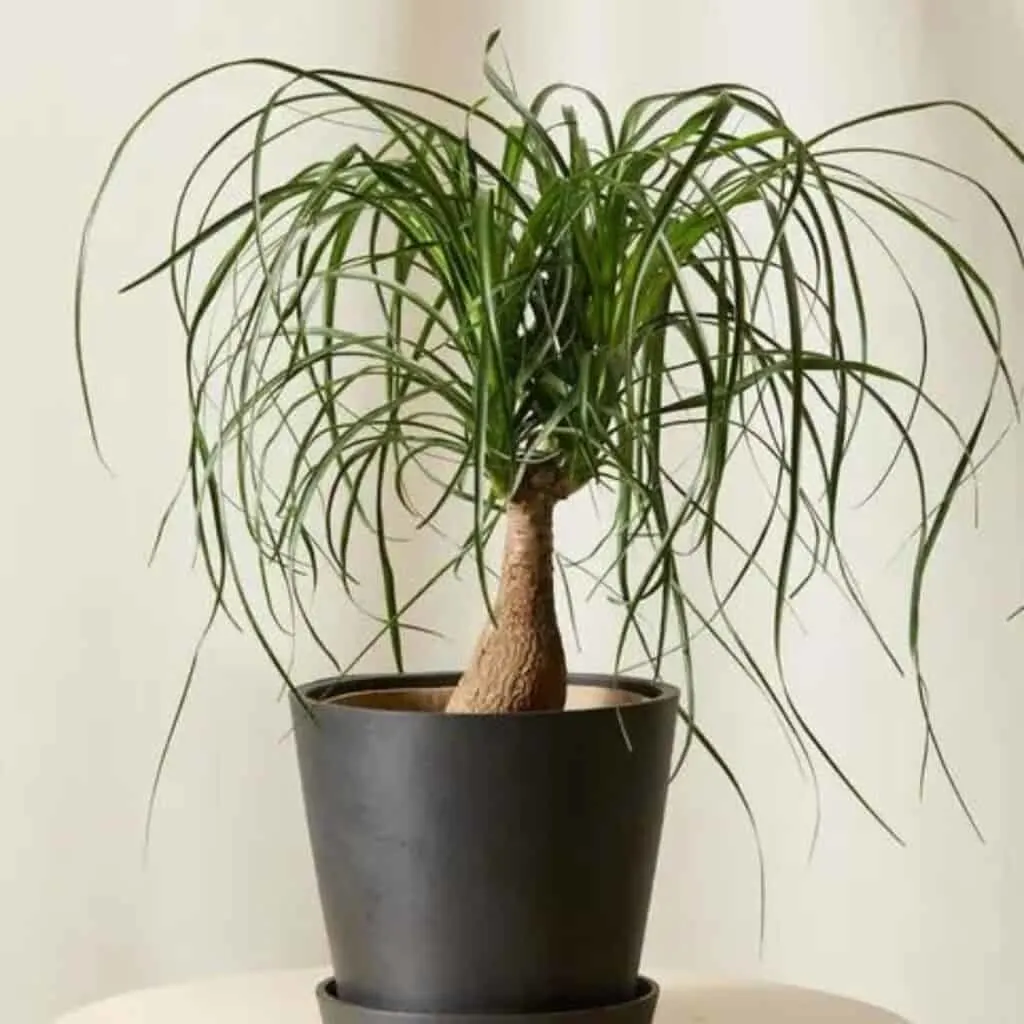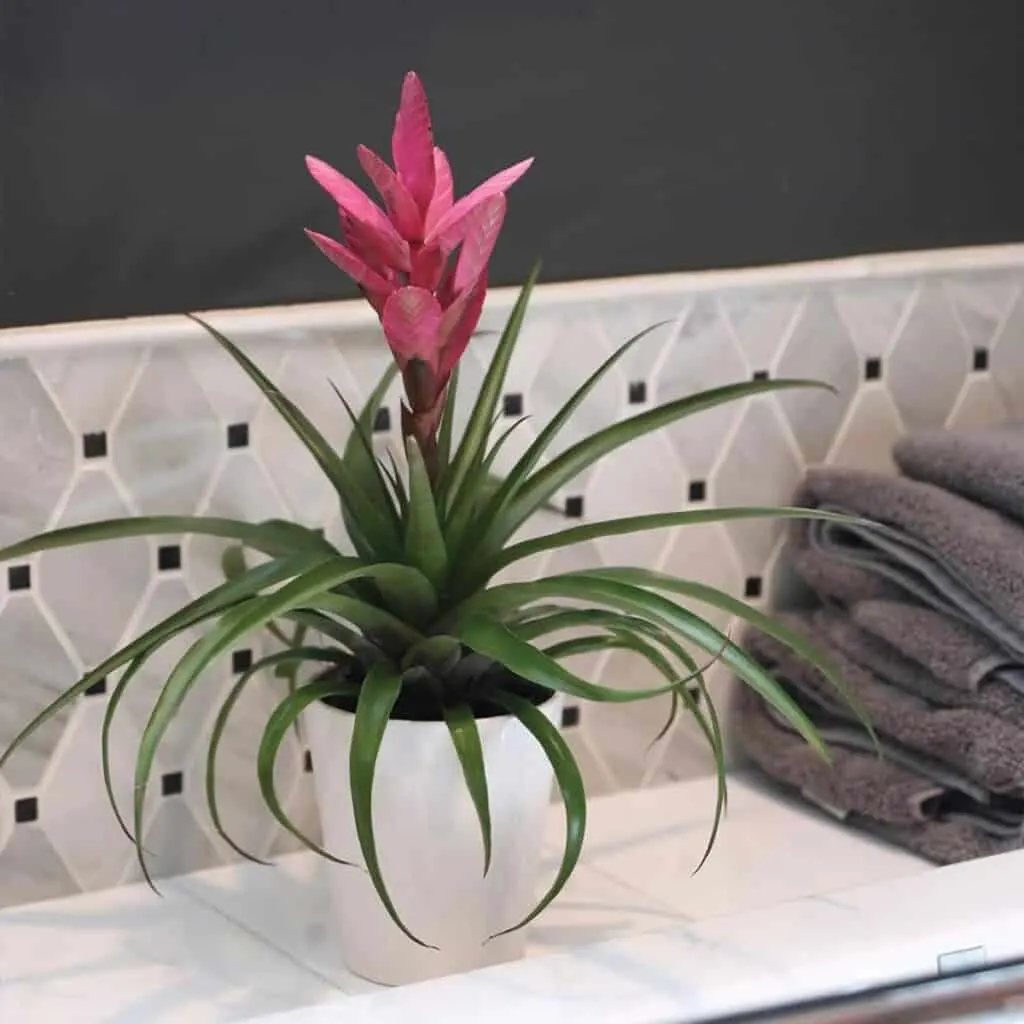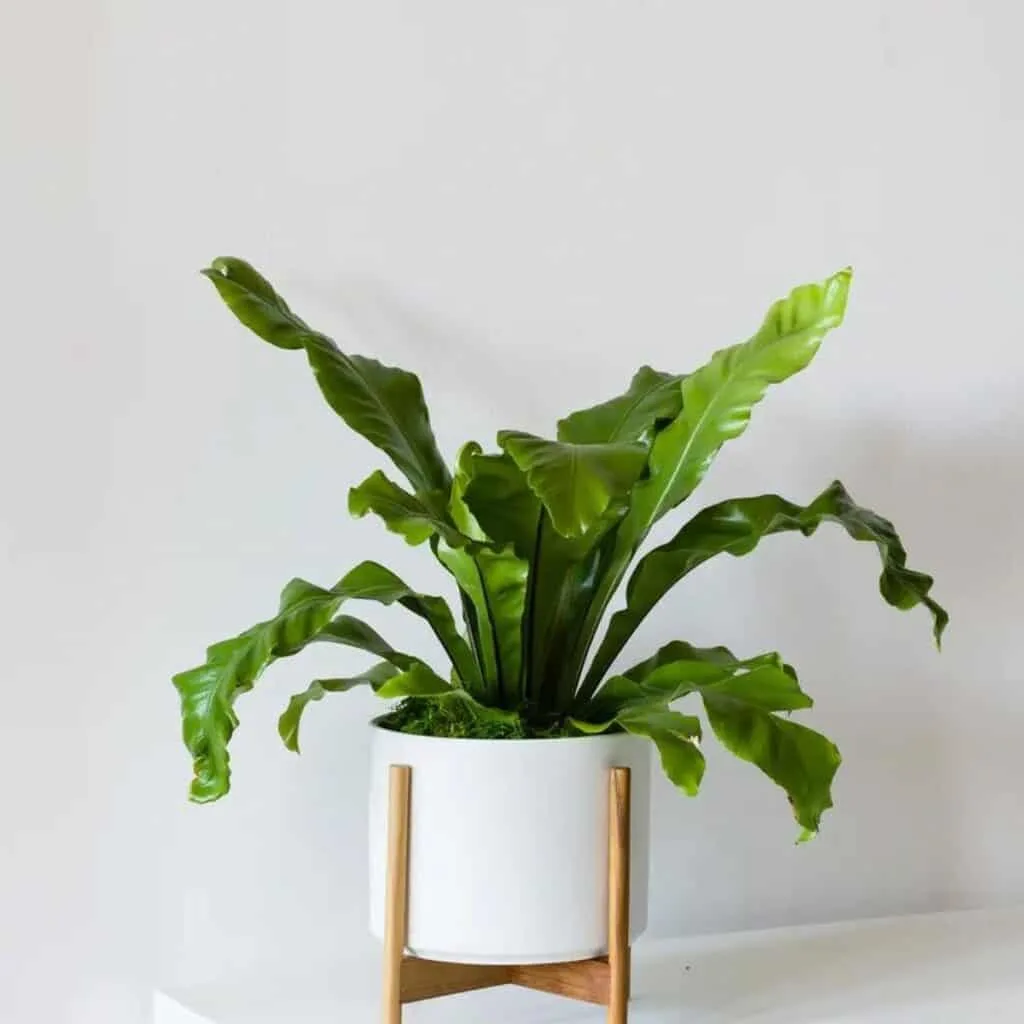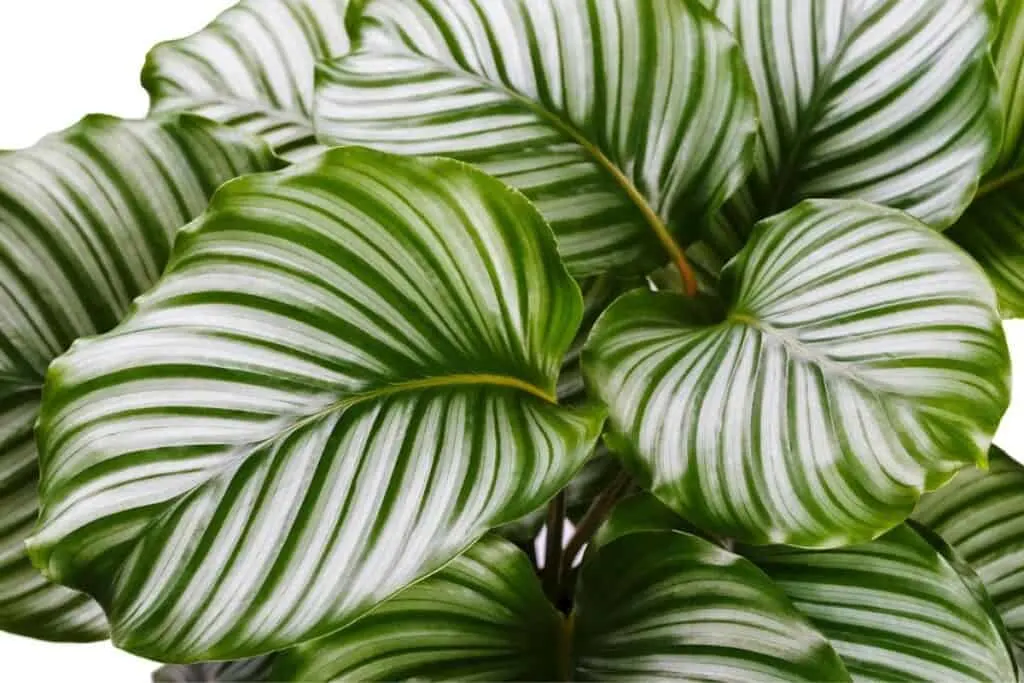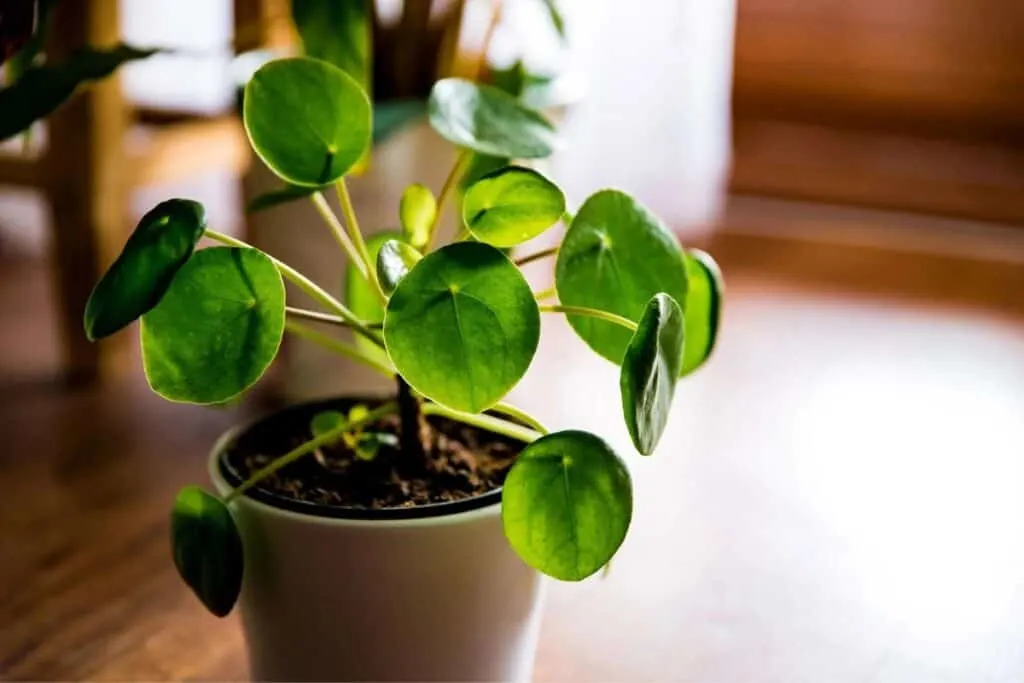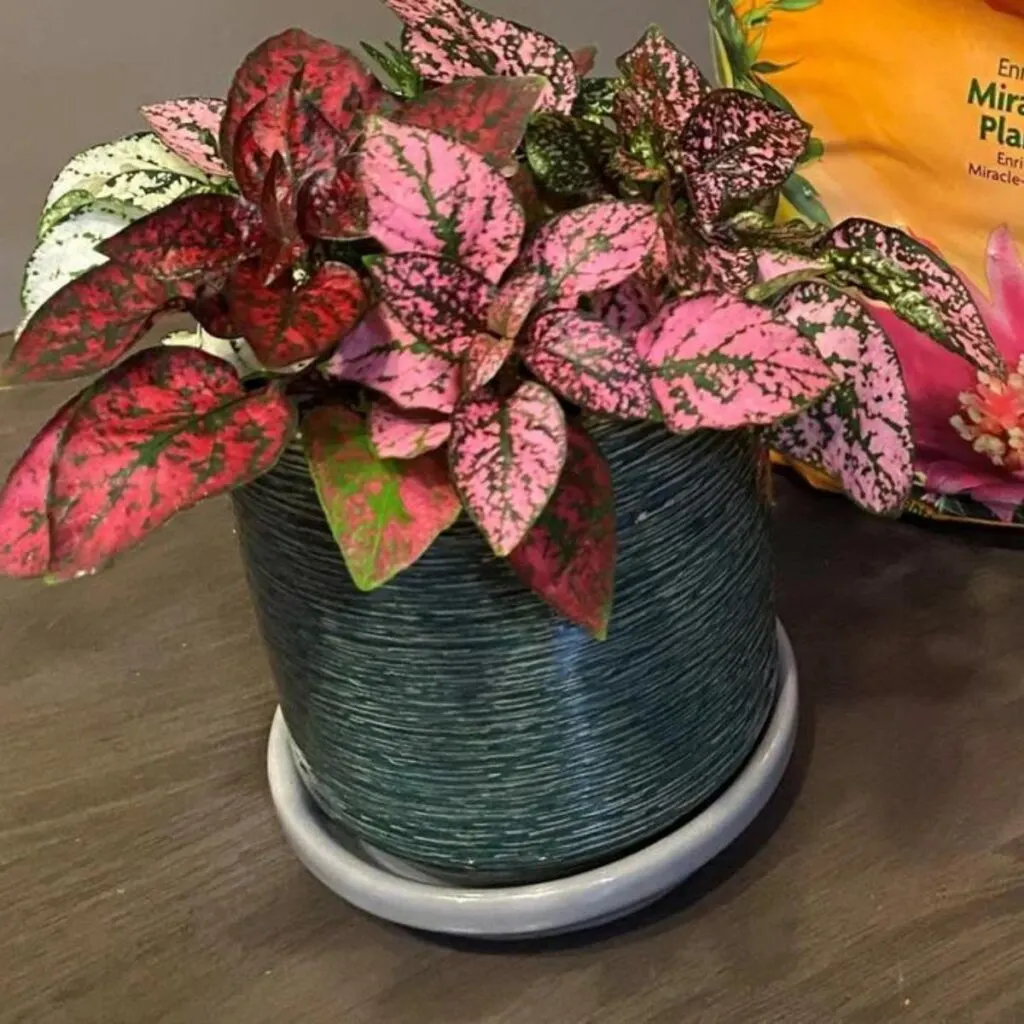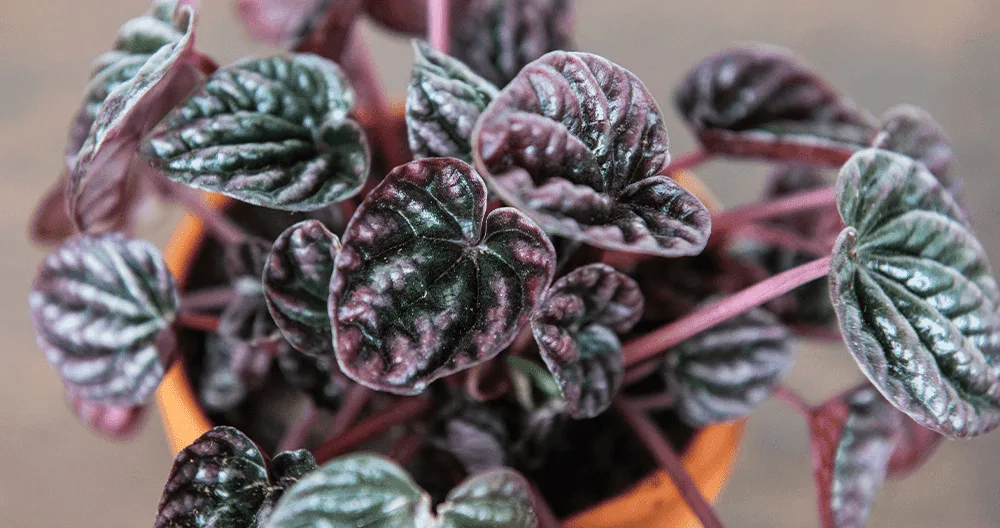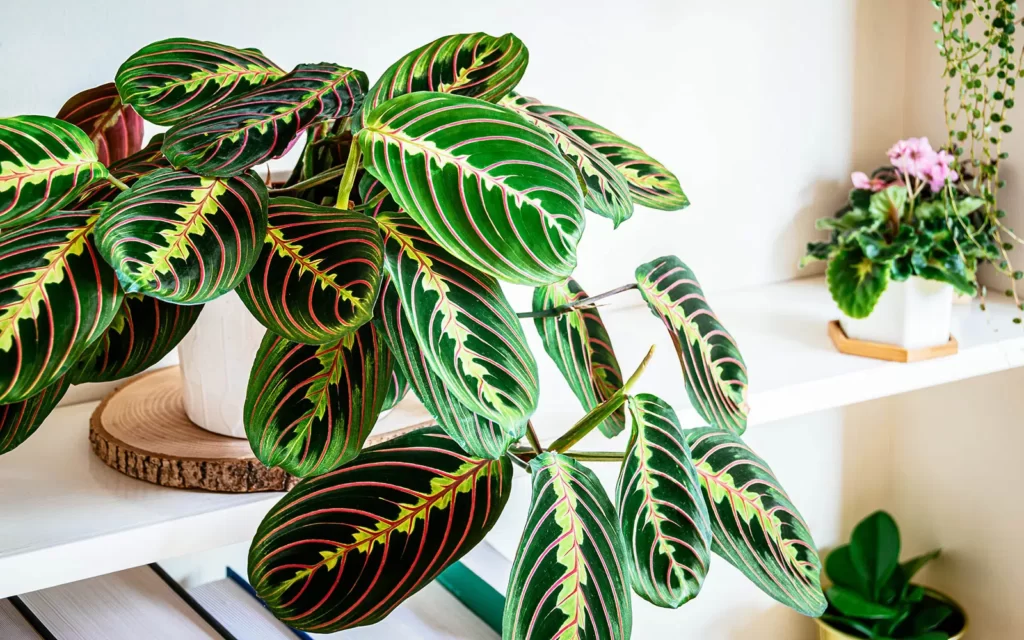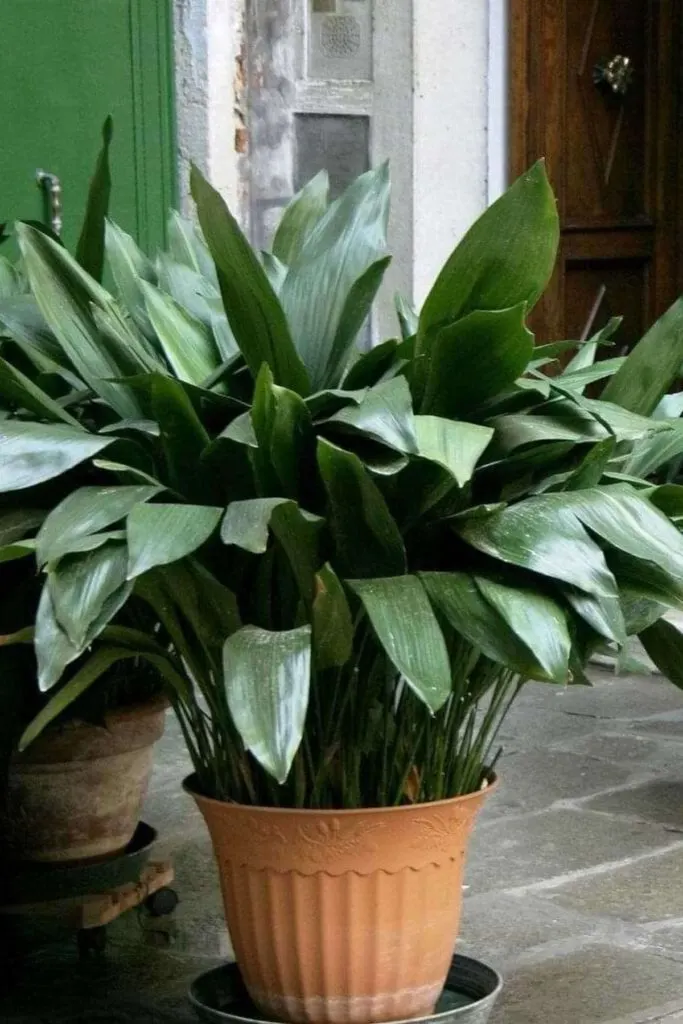Cats and Dogs are a part of our lives but we also want to have a beautiful home with live plants. Today I have 30 of the best pet-friendly plants that are safe for your furry loved ones!
Plants have always been a big part of decorating and for me they are essential. They bring a freshness to a home, not to mention they purify the air.
Unfortunately a lot of plants are toxic to cats and dogs. Well I have a ton of great plants for your home that will not hurt your four legged family member.
Pet-Friendly Plants
Rattlesnake Plant
Rattlesnake Plant is a gorgeous plant with wavy leaves with variegated shades of green. Even the underside of the leaves has gorgeous purple-red colors. It grows about 20 inches tall.
These plants aren’t great for beginners because they have very specific heat light and moisture requirements. Despite this, they are worth the effort. This plant likes filtered light, well-drained soil, and to be moist, not wet.
Gloxinia
This showy plant produces gorgeous purple flowers. It is an annual so once it’s done flowering it usually dies out.
Gloxinia prefers indirect light and lots of it. It also likes moist soil but not wet. Make sure to water the soil and not the leaves, they will develop brown spots if they get wet.
Watermelon Peperomia
Watermelon Peperomia has become very popular as a houseplant because of its compact beautiful foliage. It’s actually pretty easy to care for as long as you are consistent with watering.
This plant likes bright to medium indirect light. It also likes warmth and humidity although most homes have adequate humidity for this plant.
Baby Tears
Baby Tears is a lovely plant with small bean-shaped leaves. It’s perfect for terrariums and mixed containers. It is a good plant for beginners but does require a bit of attention.
This plant thrives in partial to shade, humid conditions. It is a tropical plant sometimes confused with moss. It likes about 75% humidity and moist soil, never drying out.
Banana Tree
Banana Trees are often considered trees but they are actually a plant due to not having a woody stem. There are tons of different varieties so no matter the size of your home there is a plant to fit it.
This plant has long oblong leaves and generally grows at a fast rate. The amount of light your plant gets is best determined by the variety. Some love full sun while others can get scorched in direct light. They are tropical so require lots of warmth and humidity.
Mosaic Plant
The Mosaic Plant is an aquatic plant grown in calm water. It has beautiful leaves that resemble mosaics hence its name.
This plant requires a water temperature of 72 degrees or more. It’s slow growing about a foot per month. It is also an annual and best only for zones 11-12.
Spider Plant
Spider Plant is well known for its ease of care and its air-purifying abilities. They prefer well-drained soil and don’t like to be too wet or too dry.
In the summer months mist often to encourage growth. You will see small spider-looking growths at the ends of leaves known as pups. These can be taken off to create new plants.
Staghorn Fern
The Staghorn Fern is named because its leaves resemble deer antlers. This plant is more difficult to grow but has become popular due to its uniqueness.
The plant actually is one that grows on other plants, however, it is not a parasite. The leaves grow in a way to shield the root ball and can get to as much as 3 feet long. This plant likes dappled sunlight and lots of humidity.
Echeveria
Echeveria are very popular and are fast-growing succulents. They love lots of sunlight and require about 4-6 hours a day. Since they are succulents they don’t require a ton of water.
Do not let water sit on the leaves as this can make the leaves rot. Also, make sure you remove any dead leaves as this becomes a haven for bugs.
Areca Palm
The Areca Palm is actually considered an endangered species in Madagascar. It’s a great plant for outdoors but also does really well inside.
This plant loves dappled sunlight but also can do well in full sun. It likes a moist well-drained soil. Let the soil completely dry out in between watering.
Snake Plant

Snake plant is a great beginner plant because it is easy to grow and very hardy. They tolerate low light or bright indirect light. It loves warm weather and is drought-tolerant.
They love loose well-drained soil, the more sandy the better. Only water when the soil is dry, every two weeks in the summer, and once a month in the winter.
Ponytail Palm
Ponytail Palm has been a popular houseplant for a long time. They are fairly easy to care for as long as you don’t overwater them. Indoors they typically grow to about four feet tall.
A succulent potting mix is best for this plant. They like bright indirect sunlight and allow for the top inch or two of soil to dry out in between watering.
Holiday Cactus
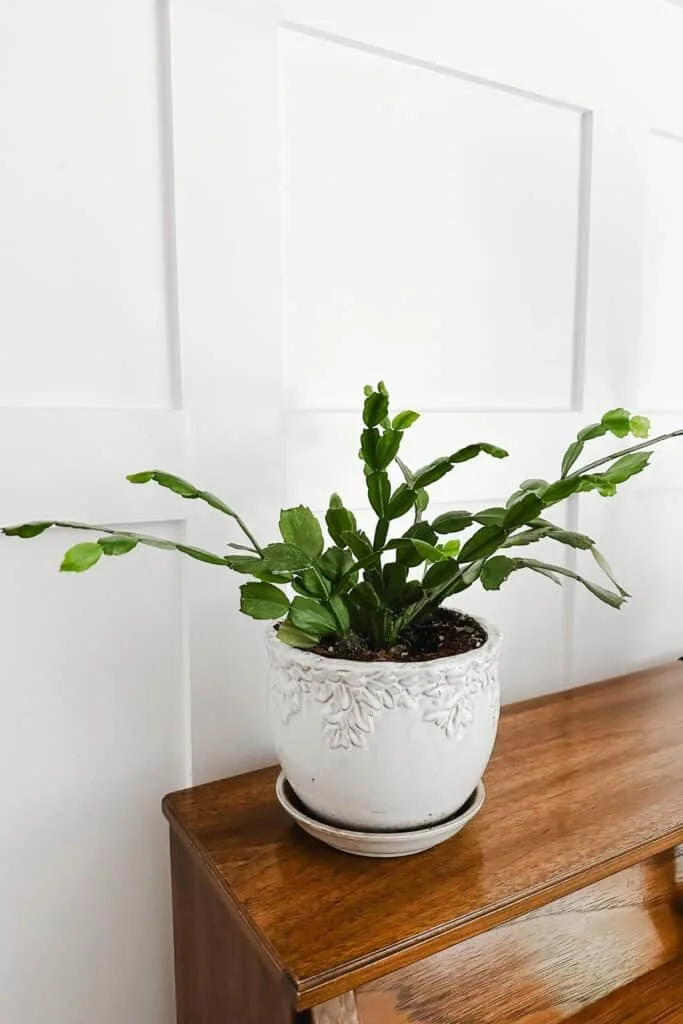
There are a few types of Holiday Cactus. Some bloom in the Spring and are often called Easter Cactus and others bloom between November and January. These are often called Christmas Cactus or Thanksgiving Cactus.
They prefer bright indirect light and frequent watering if the soil drains well. If the soil holds water then let them slightly dry out in between watering.
Bromeliaceae (aka Bromeliads)
Bromeliads are widely available and require medium to bright indirect light. They prefer more shallow containers and loose soil.
Bromeliads like high humidity so set them in a tray with rocks and water. Just be sure that the roots are not sitting in the water or they will develop root rot.
Money Tree
The Money Tree Plant is an easy to care for and tough plant which makes it ideal for the beginner plant owner. It does well even in low-light conditions but prefers bright indirect light.
Water this plant once every one or two weeks and allow the soil to almost go dry in between. This plant also loves a more humid environment, somewhere around 50%.
Moth Orchids
Moth Orchids are among the easiest orchids to grow and keep alive. These are great for beginner plant owners.
These plants love bright, indirect light as well as lots of humidity. They do not like to be overwatered though. Make sure they have well-drianing soil and let the top inch or two dry out before watering.
Birds Nest Fern
Birds Nest Ferns grow on the surface of other plants in their native rainforest habitat. They have long, bright green, lance shaped fronds.
These plants prefer bright to medium indirect light and lots of humidity. They need a well-drained soil and don’t like it to be soggy. Make sure you let it dry out in the top inch before watering.
Sword Fern
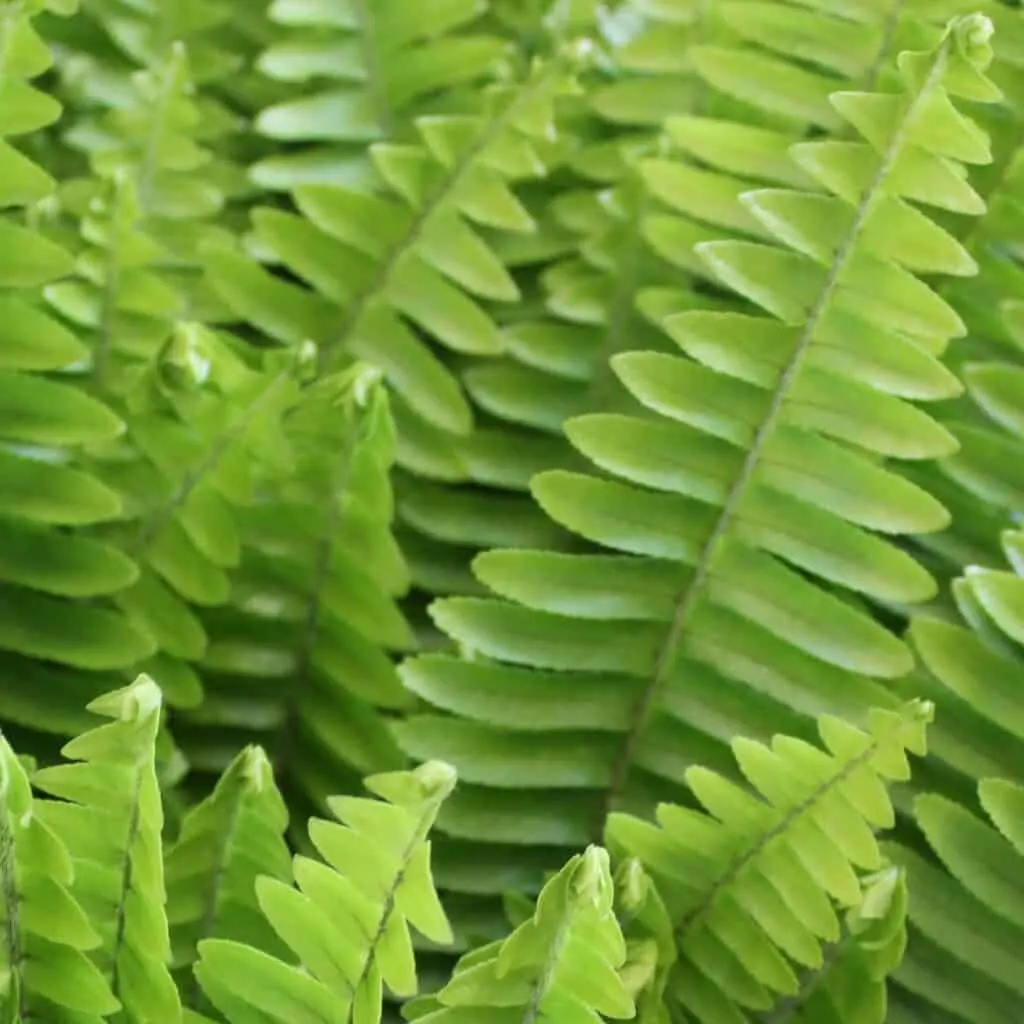
Sword Ferns are easy to grow and do really well outdoors in zones 5-9. They like shady moist conditions. They are also really easy to grow indoors.
This plant needs part shade to shade and a good well-draining soil. It likes warm conditions with lots of humidity. Water once a week and make sure to keep the soil moist not wet.
Calatheas
Calatheas are part of the Prayer Plant family and are very popular because of their colorful leaves. They prefer warmer temperatures and higher humidity.
This plant does best in bright to medium indirect light but can also live in low light conditions. As far as watering goes, let the soil dry out halfway in between watering.
Friendship Plant
The Friendship Plant is part of the Pilea species with the Chinese Plant which is noted below. There are many species of this plant and they can look quite different.
They can grow up to 12 inches, prefer bright to medium indirect light, and prefers to dry out completely in between watering.
Chinese Plant
Chinese Money Plant aka Pilea Peperomioides is loved for its unique foliage. This plant loves medium to bright indirect light. If it doesn’t have enough light the leaves will grow smaller, grow fewer offshoots, and become leggy.
Allow the plant to completely dry out in between watering. The leaves will start to droop when it needs water.
Polka Dot Plant
Polka Dot Plant commonly has brightly variegated leaves flecked with pink. Some can have flecks of purple, white, or red.
This plant loves warm humid spaces and bright indirect light. It requires well-drained soil and to be kept moist at all times. Water when the top inch is drying out.
Radiator Plants
The Radiator Plants are from a well known species of Peperomia. They are called Radiator Plants because they like warm places so next to a warm vent or window is best.
These plants are pretty tough which makes them a great plant for houses with puppies. If they get knocked around they tend to survive. They like bright indirect light. Let the top two inches of soil dry out in between watering and make sure you don’t overwater.
Parlor Palm
The Parlor Palm is a fairly easy to grow plant which makes it a great one for newer plant owners. It loves high humidity and bright indirect sunlight. Although it does okay in lower light as well.
This is a great air purifying plant. It also likes a acidic to neutral ph in the soil.
Orchid
There are over 2500 species of Orchids but what is great they are very pet-friendly. Growing an orchid is easier than most people think.
The worst thing you can do is overwater your orhcid. Let it dry out in between watering. And make sure you have a good well-draining soil.
Tillandsia (aka Air Plant)
Air plants are quite unique because they require no soil to grow. The main thing they need is air!
While air plants don’t require soil they do require water. Once a week you need to submerge the plant in water for about half an hour. Then shake the water off and turn it upside down and let it dry out. Then replace it where it belongs.
You can also mist the plant every couple of days in the winter months when humidity is low in our homes.
As far as light requirements they love a brightly lit spot that is out of direct sunlight.
Haworthia
Haworthia is a small slow-growing succulent that looks similar to an aloe plant. This plant loves warmer temperatures, between 70-95 degrees, and bright direct sunlight.
Because it is a succulent you want to let the top couple of inches dry out in between watering. Also make sure you use a wekll-draining soil.
African Violets

African Violets do really well in almost any home. They bloom almost continuously with white, blue, or purple flowers over fuzzy leaves.
This plant likes to be root bound, it encourages more blooms. So only change the soil out every one to two years. Make sure you place it in bright indirect light and keep it moist but not soggy.
Prayer Plant
Prayer Plants prefer a moist environment with well-draining soil. It requires indirect sunlight, never direct light as the leaves will get washed out and develop brown spots.
Never let the soil dry out on this plant but make sure it is well-draining soil so it doesn’t develop root rot. Because this plant loves moist areas you can place a humidifier near it or put it on a tray with water and stones. You can also mist the leaves with room temperature or warm water.
Cast Iron Plant
The Cast Iron Plant is a great plant for beginners because it is so hard to kill. It can tolerate low light, and irregular watering, and can handle a range of indoor temperatures. This plant survives where many would die.
The leaves can reach 2 feet long. It grows slowly in low light and faster in more sunlight. But direct light will burn the leaves so indirect is best.
Other Plant Posts You Might Like:
- The 31 Best Houseplants for Beginners
- 14 Plants and Trees that Repel Mosquitos
- 13 Deer Resistant Plants and Flowers
- The Ultimate Guide to Snake Plant Care


Pet-Friendly Plants
As a licensed Real Estate Agent and an avid home decorator, I strive to give my clients the very best I can when it comes to staging, selling, and decorating their homes. I have lots of experience with paint color choices and love to DIY my home so I can have everything just the way I want it. I share my ideas and projects with the world in the hopes that I can help others have their homes just the way they want as well.


